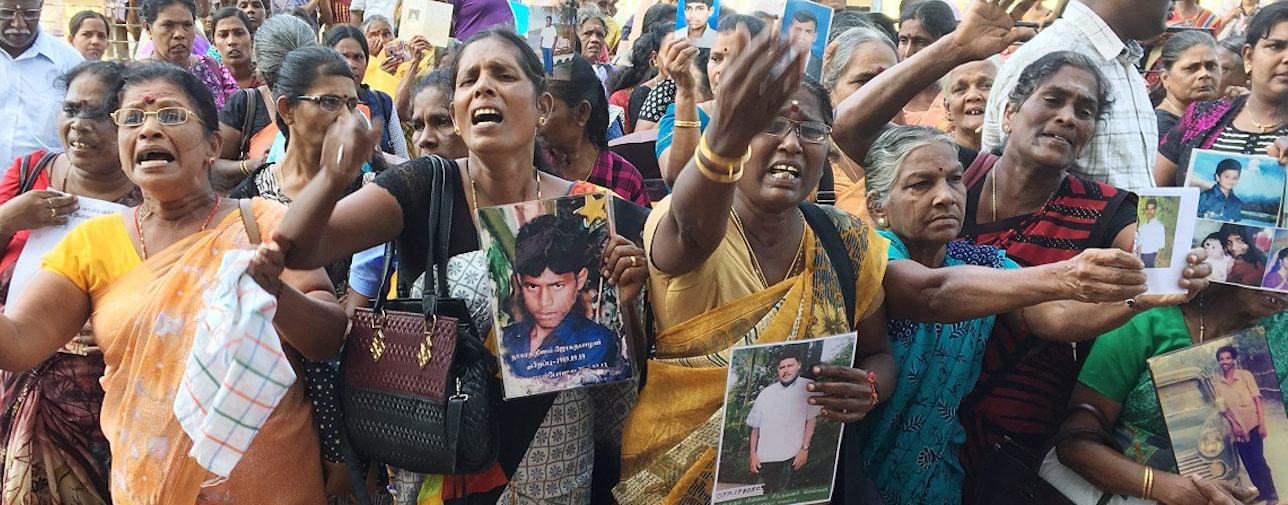
Genocide: Tamil Hindu women holding pictures of "missing male" Tamil family members.
Sri Lanka
Too few Asian people cared enough to do something about the Communist / Sinhalese ethnic cleansing of Sri Lankan Tamil peoples. The suppression, persecutions, the disappearances, the horrific war crimes that left a hundred thousand Tamils dead, the zombified survivors dispersed and displaced across the western world. And too few Tamils know that Communism was behind the world's complacent silence. Remember them and use your voice, whilst you still have thought to substantiate your choice.
LTTE - Liberation Tigers of Tamil Eelam
The Liberation Tigers of Tamil Eelam (LTTE) also known as the Tamil Tigers) was a Tamil militant organization that was based in northeastern Sri Lanka. It aimed to secure an independent state of Tamil Eelam in the north and east responding to the state policies of successive Sri Lankan governments that were widely considered discriminative towards the minority Sri Lankan Tamils, as well as the oppressive actions—including anti-Tamil pogroms in 1956 and 1958—carried out by the majority Sinhalese.
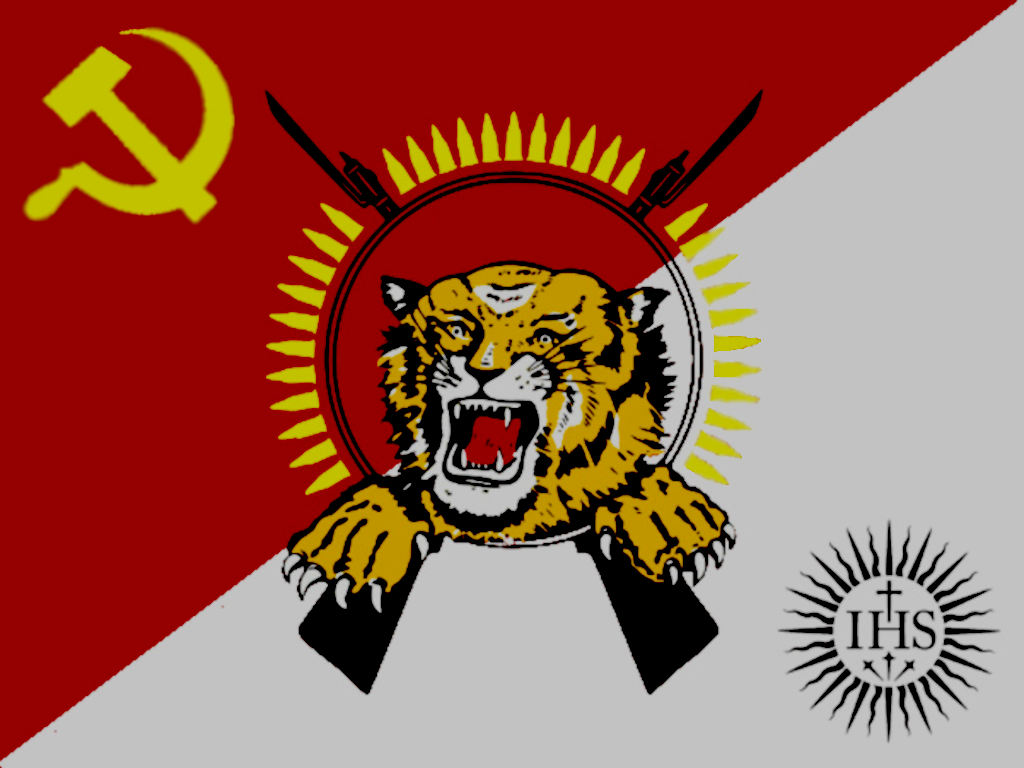
History of LETTE
Founded in May 1976 by Velupillai Prabhakaran, the LTTE was involved in armed clashes against the Sri Lankan government and armed forces. Oppression against Sri Lankan Tamils continued by Sinhalese mobs, with the 1977 anti-Tamil pogrom and 1981 burning of the Jaffna Public Library taking place. Following the week-long July 1983 anti-Tamil pogrom carried out by Sinhalese mobs that came to be known as Black July, the LTTE's escalation of intermittent conflict into a full-scale nationalist insurgency begun, which started the Sri Lankan Civil War.
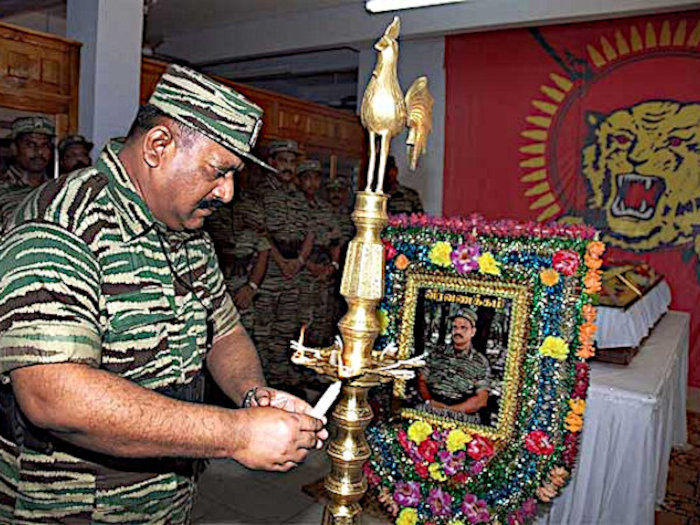
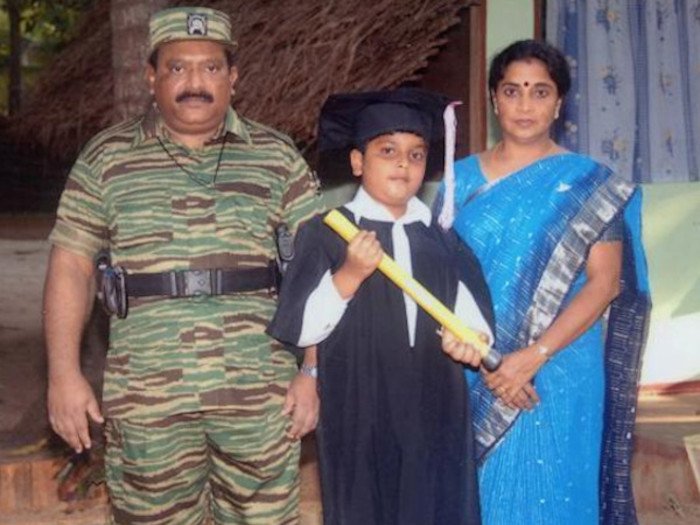
Initially starting as a guerrilla force, the LTTE increasingly came to resemble that of a conventional fighting force with a well-developed military wing that included a navy, an airborne unit, an intelligence wing, and a specialized suicide attack unit. The LTTE gained global notoriety for using women and children in combat and carrying out many high-profile assassinations, including former Indian Prime Minister Rajiv Gandhi in 1991 and Sri Lankan President Ranasinghe Premadasa in 1993.
Egalitarian LETTE
Mythed by mesmerizing world politics and an affirmed Christian sense of redemption, LETTE leader Velupillai Prabhakaran was at best a deluded and limited visionary. He criticized what he saw as the oppressive features of traditional Hindu Tamil society, such as the caste system and gender inequality. The LTTE presented itself as a revolutionary movement seeking widespread change within Tamil society, not just independence from the Sri Lankan state.

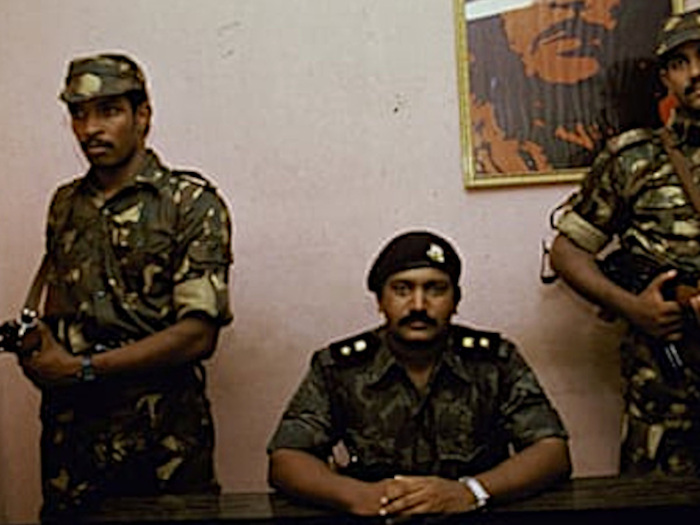
“With Islam to the East, Christianity to the West, Buddhism to the South and Hinduism in the North; Prabhakaran's LETTE headquarters would have been more appropriately located in Negombo than being in Kilinochchi”.
Prabhakaran described his political philosophy as "revolutionary socialism" with the goal of creating an "egalitarian society". If the LETTE had won the Sri Lankan civil war under the doctrine of Prabhakaran his visioned ethnocentric and homogenous homeland of Tamil Eelam would have manifested into a melting pot of dystopic cultural Marxism, destined to erode, maybe even annihilate the ethnic-cultural and indigenous identity of the Sri-Lankan Tamil people.
“Prabhakaran kill[ed] the entire moderate thinking Tamil Hindu leaders, politicians, academics, and people respected in society”.
Lacking a sense of inherent awareness to see a bigger picture behind the bi-racial troubles Prabhakaran fought fire with fire, he believed and promoted the very Communist “principles” that was ultimately oppressing his Tamil people and would have inevitably become a tyrannical replacement; risen as a victorious oppressor from a conquered oppressor.
Two wrongs never make a right but, in this case, existed only to fight with an end game of not only annihilating the Hindu Sri Lankan North but plunged the Buddhist south into a spiral of never-ending debt strengthening the death grip of Communist encroachment upon the Asian Continent.
LTTE insurgency as Christian Proxy War
LTTE purposefully drove a wedge between two of Asia's most indigenous religions of Buddhism and Hinduism. Christianity covertly rallied to exploit the dividing mechanism of cultural Marxist Communism that sought to turn two of the world's most ancient religions against each other, as usual, the world over it was egalitarianism driving a wedge of discordance through exploiting ethnic indifferences.
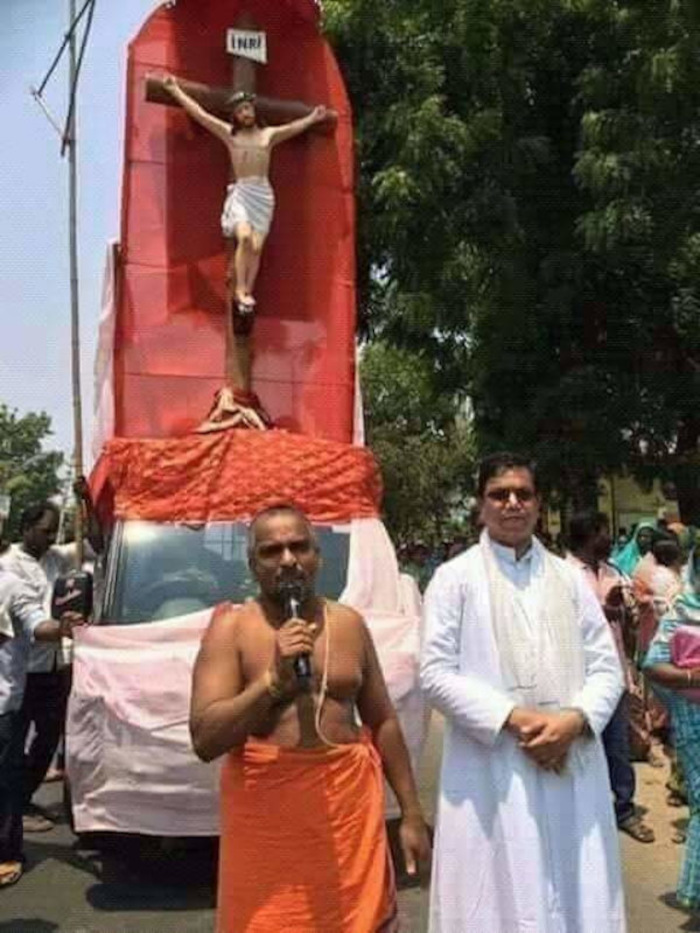
“So far as one can understand the present Christian effort, it is to uproot Hinduism from its very foundation and replace it with another faith.”.
Most of LTTE’s top-tier leaders were Christian and often hid their Christian identity with Hindu names. The cadres were almost all low-caste impoverished Hindus, most of whom would have been unaware that they were pawns of Church-sponsored terrorism via LTTE because LTTE’s ties to the Church was one of its best kept secrets.
The names of some top-notch Christian leaders: Prabhakaran aka Pirapaharan, SP Tamil Selvam, Balraj aka Balasegaram Kandiah, Pottu Amman, Prabhakaran’s son Charles Anthony, Anton Balasingham – Roman Catholic and LTTE’s self-declared “theoretician”, Soosai aka Thillaiyampalam Sivanesan, Thenmozhi Rajaratnam, nickname Dhanu and Rajiv Gandhi’s suicide bomber assassin.
Church clergy openly supporting LTTE:
- Frs. Singarayer, Diyogupillai, Prof. (Fr.) Joseph Chandrakanthan, from the Department of Theology at the University of Toronto, a former President of the University of Jaffna Teacher’s Association
- Father Jagat Gasper Raj, close to DMK leadership in India
- Fr. SJ Emmanuel, the former Vicar-General of Jaffna, currently residing in Germany. He is on record saying he is first a Tamil and then a Christian. He called Prabhakaran ‘Jesus Christ’, the LTTE ‘soldiers of Christ’, the suicide bombers ‘martyrs of the Catholic Church’ to whom the Church provided a Catholic burial, and proclaimed himself as ‘the Moses’ who would lead the Tamil nation from the bondage of Sinhalese-Buddhists to the land chosen for them by God: Eelam. He leads the Global Tamil Forum.
- S Jebanesan, Bishop of the Church of South India (CSI), who said he was working on theology for Tamils, that is, excluding Sinhala Christians!
- Prof. S Chandrakanthan, attached to the Theology Department, Toronto University, Canada
- Rev. Dick Wootton of Uniting Church, Melbourne, Australia
- Bishop Kenneth Fernando of the Anglican Church, visited Prabhakaran with Charles Abeysekera and Jayadeva Uyangoda and announced, “Prabhakaran is humane” shocking all
- Rev Sr. Mary Barbara, Dr Anita Nesiah, M. Rajasigham, Joe William and T. Jayasingham of the National Peace Council
- Rajappu Joseph, Bishop of Mannar, declared open the ‘Embassy of the Tamil Eelam’, the Eelam House in London.
State Supression
Majority Dominance
Historical interethnic imbalances (provoked by Communist doctrine of Political Correctness) between the Sinhalese and Tamil populations are alleged to have created the background for the origin of the LTTE. Post independent political correct Sri Lankan governments attempted to rectify through affirmative action the “disproportionate favouring and empowerment” of Tamil minority by the colonial rulers, which led to mass ethnic discrimination, seeded hatred and division policies including the “Sinhala Only Act” and gave rise to separatist ideologies among many Tamil leaders. By the 1970s, the initial non-violent political struggle for an independent mono-ethnic Tamil state (EELAM) was used as justification for a violent secessionist insurgency led by the LTTE.
Enforced disappearances
Thousands of people have disappeared in Sri Lanka since the 1980s. A 1999 study by the United Nations found that Sri Lanka had the second-highest number of disappearances in the world and that 12,000 Sri Lankans had disappeared after being detained by the Sri Lankan security forces. A few years earlier, the Sri Lankan government had estimated that 17,000 people had disappeared. There is currently a backlog of between 60,000 and 100,000 disappearances since the late 1980s.
“The commemoration is a poignant reminder of the painfully long wait of families of the forcibly disappeared for answers about their loved ones. Their families were taken away from their loved ones, and then they have been denied the truth about their whereabouts”.
In June 2016, Chandrika Bandaranaike Kumaratunga, a former president of Sri Lanka and head of the government’s Office on National Unity and Reconciliation, acknowledged having received at least 65,000 complaints of disappearances since 1995. Sinhalese young people suspected of affiliation with the leftist Janatha Vimukthi Peramuna (JVP) were killed or forcibly disappeared by government-operated death squads in 1989 and 1990.
Tamils suspected of links to the Liberation Tigers of Tamil Eelam (LTTE) were forcibly disappeared by police, military and paramilitary operatives during the armed conflict between 1983 and 2009, a pattern that continued for several years after the conflict ended. The LTTE took prisoners and abducted adults and children to serve as fighters; many of them are still missing today. More than 100 cadres of LTTE who surrendered to the Sri Lankan army near the end of the war in May 2009, have also subsequently disappeared.
I am writing/calling to demand justice for Tamil families of the disappeared, who have been protesting for 1000 days across the North-East of Sri Lanka. I am joining them in demanding answers about their loved ones, many of whom were in the custody of the Sri Lankan government. There are currently 60,000 to 100,000 unresolved cases of enforced disappearances in Sri Lanka — most of which were perpetrated by the state against Tamils during the final phase of the armed conflict.
The international community must call upon the Sri Lankan government to answer the demands of these families, by releasing information about detainees (past and present) and about secret detention camps. Following the presidential election of Gotabaya Rajapaksa, who ordered the use of white vans to abduct and disappear Tamil civilians and cadres, Tamil families of the disappeared fear regression on the little progress made on their demands and personal risk to their safety.
The international community must offer them protection and support their years-long struggle for truth and justice.
Sri Lankan security forces and intelligence agencies have intensified surveillance and threats against families of victims of enforced disappearance and activists supporting them since Gotabaya Rajapaksa became president in November 2019. Following the presidential election, a government investigator looking into this and other cases of alleged serious rights violations implicating government officials fled the country following threats. Other criminal investigators have since been put under travel restrictions. Activists working in six locations in the northern and eastern parts of the country on behalf of relatives of the forcibly disappeared claim there has been a significant increase in government surveillance and intimidation.
One activist said that before a recent victims’ meeting, “every one of the mothers got at least six telephone calls from different intelligence agencies asking, ‘Where is the meeting?’ ‘Who is organizing the meeting?’ ‘What is being said?’” Another activist said, “We can’t do any visible programs.… We’ve stopped everything.” UN reports found credible allegations of enforced disappearances by government forces of captured LTTE fighters and Tamil civilians during the final months of the war in 2009.
China
Historical and cultural ties between Sri Lanka and China extend back centuries. Diplomatic ties between Sri Lanka and China have been very close, especially during Sri Lanka Freedom Party governments. On February 7, 1957, China and Sri Lanka established diplomatic relations, Sri Lanka was among the first countries to recognize the People’s Republic of China.
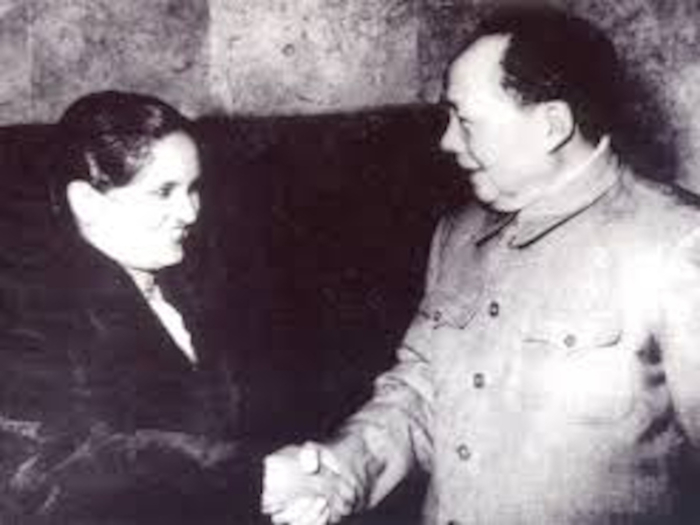
The Sri Lankan government is so historically Maoist that the Socialist Communist administration declared eight days of mourning to coincide with observances in China. September 18, the day of Mao’s last rites in Peking, was also declared a day of national mourning and a public holiday. The sincerity of the communiqué was revealed when the Colombo Telegraph found a related leaked US diplomatic cable from the WikiLeaks database dated 1976 September 24; the cable was classified as “Confidential”.
In 1996, then Sri Lankan President Chandrika Bandaranaike Kumaratunga paid a state visit to China at the invitation of then Chinese President Jiang Zeming.
Relations between both countries during the rule of Sri Lankan president, Mahinda Rajapaksa, resulted in many agreements and saw closer relations due to Rajapaksa's pro-China stance. Sri Lanka supports China's position in the South China Sea dispute. Sri Lanka is a major country on the “String of Pearls” which is part of the Chinese strategic initiative in the Indian Ocean, known as the Maritime Silk Road and is part of the bigger development strategy known as the One Belt, One Road.
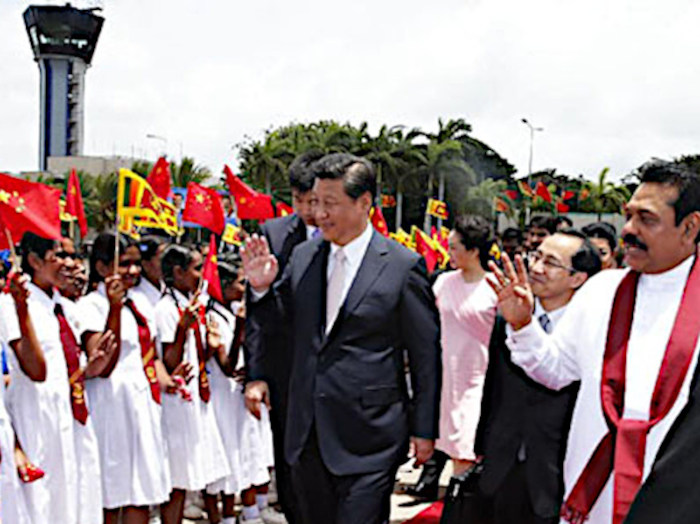
“On May 22, 2014, Xi met Rajapaksa in Shanghai on the sidelines of a summit of the Conference on Interaction and Confidence Building Measures in Asia. During their meeting, Xi called for joint efforts to build the 21st Century Maritime Silk Road and promote the China-Sri Lanka free trade talks. The Sri Lankan president vowed to facilitate maritime cooperation with China and invited Xi to visit his country.”.
Sri Lanka's debt situation is severe. The country is currently in $58.3 billion deep to foreign financiers, 95.4% of all government revenue goes towards paying back its loans. This means that out of every hundred dollars the government brings in, only $4.60 is going towards essentials like education and public services. China between 2004 and 2014 provided a staggering 7 billion dollars in loans. China and Sri Lanka also share a military relationship, with China selling a range of modern armaments to the Sri Lanka Armed Forces.
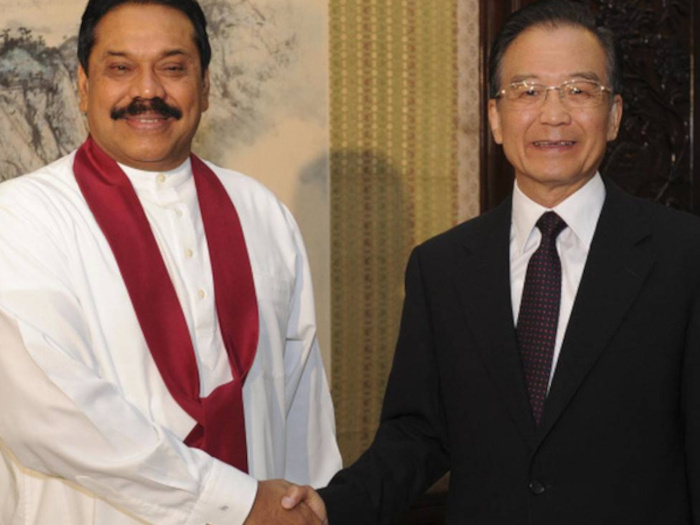
On, April 8-9, 2005, then Chinese Premier Wen Jiabao visited Sri Lanka. The two sides issued a joint communiqué committing themselves to developing an all-round cooperative partnership featuring sincere support and everlasting friendship.
China began selling arms to Sri Lanka in the 1990s and quickly became one of the country's biggest suppliers. In 1998, the European Union issued guidelines that advised member nations against supplying weapons to countries fighting internal conflicts or with poor human rights records. In 2007, the US stopped selling arms to Sri Lanka as China that year supplied 3-D radar equipment for a base in Mirigama, on the outskirts of Colombo.
In 2009, Colombo, fighter jets in formation rushed overhead while tanks and artillery mounted vehicles rolled solemnly past. This was the scene last week in Colombo as Sri Lanka officially celebrated its victory over the Tamil Tigers. the parade also demonstrated the extent to which Sri Lanka's foreign allies had been instrumental in the victory — especially China. There were tanks and planes from Russia and mobile radar units from Israel, but the majority of the hardware on display was Chinese made.
China became Sri Lanka's largest donor when it gave $1.1bn in 2009; up from several million in 2005. In that year, China gave Sri Lanka six F-7 fighter jets, one of which shot down three of the Tigers' light aircraft in October. Pakistan, possibly at China's request, has also supplied Sri Lanka with ammunition. Udaya Nanayakkara, the spokesman for Sri Lanka's army, acknowledged that the army had bought the majority of its weapons from China over the past three years.
Chinese nuclear submarines have made several visits to Sri Lanka in September and November 2014, despite strong displeasure from the Indian government.
In July 2019, UN ambassadors from 50 countries, including Sri Lanka, signed a joint letter to the UNHRC defending China's treatment of 1.5 million Uyghurs and other Muslim minority groups interned and tortured inside “re-education” concentration camps within the Chinese autonomous region of Xinjiang.
Massacre in Mullivaikkal
Mullivaikkal massacre was the mass killing of tens of thousands of Sri Lankan Tamils in 2009 during the closing stages of the Sri Lankan Civil War, ending in May 2009 in a tiny strip of land in Mullivaikkal, Mullaitivu. The Sri Lankan government designated a no fire zone in Mullivaikkal towards the end of the war. It is in this zone where it is believed up to 40,000 entrapped Tamil civilians were killed by the actions of Government Forces.
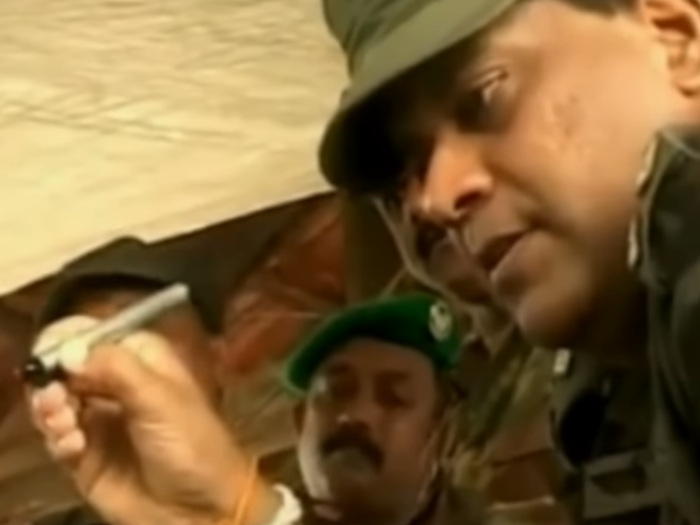
“They shot people at random, stabbed people, raped them, cut out their tongues, cut women's breasts off, I witnessed this with my own eyes. I saw the naked dead bodies of women without heads and other parts of their bodies. I saw a lot of small, innocent children getting killed in large numbers. I saw people soaked in blood, they could do whatever they wanted there, it was their empire, the soldiers at the battle front, their hearts had turned to stone. Having seen blood, killings, and death for so long they'd lost their sense of humanity, it was as though they had turned into vampires”
During the battle government forces heavily shelled the area, including hospitals, UN centres and Red Cross ships, while the LTTE held hostage much of the civilian population for cover, and enforced this by shooting escaping Tamil civilians.
“Some civilians also reported seeing an army truck running over injured people lying on the road. Later in the day, the SLA brought in earth-moving equipment to bury the bodies that had been lying outside for two days or more. Civilians reported seeing among the corpses injured people who were asking for help, and believed that the SLA did not always attempt to separate the injured and the dying from those who had died”.
the OHCHR Investigation on Sri Lanka (OISL) says:
“Multiple witnesses described scenes of devastation, with hundreds of bodies of people killed by shelling scattered across areas within the NFZs. Entire families had been killed as bombs landed in bunkers they were sheltering in. Witnesses talked of having to leave dead family members behind as they were further displaced by the shelling. Many witnesses were profoundly traumatized by their experiences and memories of the shelling and the devastation they witnessed.”.